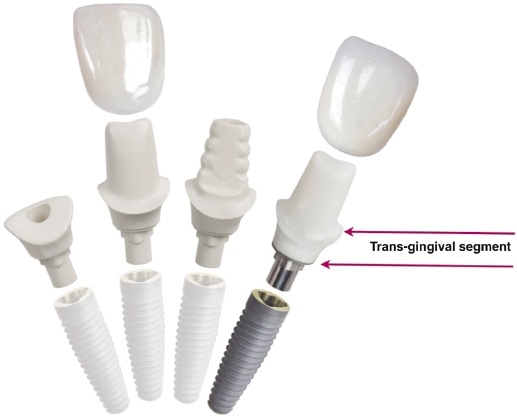2
General Information about Implant Abutments
Department of Oral and Maxillofacial Surgery, Washington Hospital Center, Washington, DC; and American Institute of Implant Dentistry, Washington, DC
Terminology
Dental implant abutments are central to the functional and esthetic aspects of implant treatment. They have a direct impact on the long-term prognosis of this treatment modality. Any abutment can be divided into three segments.
- Prosthesis connection segment: This is the segment of the abutment connected to the prosthesis (Figure 2.1).
- Implant connection segment: this is the segment of the abutment that connects with the implant (Figure 2.2).
- Transgingival segment: This is the segment of the abutment that is surrounded by the gingival tissue above the prosthetic platform of the implant (Figure 2.3).



The implant connection part of the abutment should not be altered, but the other two parts have to be modified in order to optimize the outcome of implant treatment. The prosthesis connection segment should be modified based on the following:
- The size, shape, and emergence profile of the prosthesis.
- The interocclusal or inter-ridge spaces.
- The shape and size of the interdental papilla.
- The desirable embrasure (‘V’-shaped gap between the neck of two teeth or crowns that will be filled with gum).
- The clearance required based on the material that will be used to fabricate the final crown. Less reduction is needed for a gold crown and more reduction for PFM (porcelain fused to metal) and all ceramic crowns.
The transgingival part of the abutment needs to be customized based on following:
- The thickness of the gingival above the prosthetic platform of the implant.
- The desirable emergence profile for the tooth that is being replaced.
- The overall prosthetic plan.
- Hygiene and maintenance objectives.
Stock Abutments
Stock abutments are generally made of prefabricated titani/>
Stay updated, free dental videos. Join our Telegram channel

VIDEdental - Online dental courses


